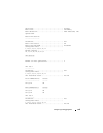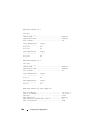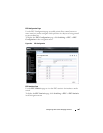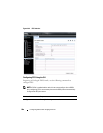
986 Configuring Data Center Bridging Features
Operator configuration of PFC is used only when the port is configured in a
manual role. When interoperating with other equipment in a manual role,
the peer equipment must be configured with identical PFC priorities and
VLAN assignments. Interfaces not enabled for PFC ignore received PFC
frames. Ports configured in auto-upstream or auto-downstream roles receive
their PFC configuration from the configuration source and ignore any
manually configured information.
When using links in a port-channel, PFC must be configured on all of the
individual links in the port-channel, as it operates on a link-local basis.
When PFC is disabled, the interface defaults to the IEEE 802.3 Annex 31B
flow control setting for the interface. PFC is disabled by default.
If you enable priority-based flow control for a particular priority value on an
interface, ensure that VLAN tagging is enabled on the interface so that the
802.1p priority values are carried through the network (see "VLAN Tagging"
on page 649). Additionally, make sure that 802.1p priority values are mapped
to CoS values (see "Configuring Class-of-Service" on page 1313). If DCBX is
enabled, the manually configured PFC parameters (no-drop priorities) must
match the peers PFC parameters. If they do not match, PFC will not be
operationally enabled and the port will continue to operate in the configured
legacy flow control mode (IEEE 802.3 Annex 31B mode or none).
PFC can be configured using the web interface and the command line
interface.
Configuring PFC Using the Web Interface
This section provides information about the OpenManage Switch
Administrator pages to use to view and configure PFC on N4000 series
switches. For details about the fields on a page, click at the top of the
page.
NOTE: This feature is configurable on physical full duplex interfaces only. To
enable PFC on a LAG interface, the member interfaces must have the same
configuration.


















